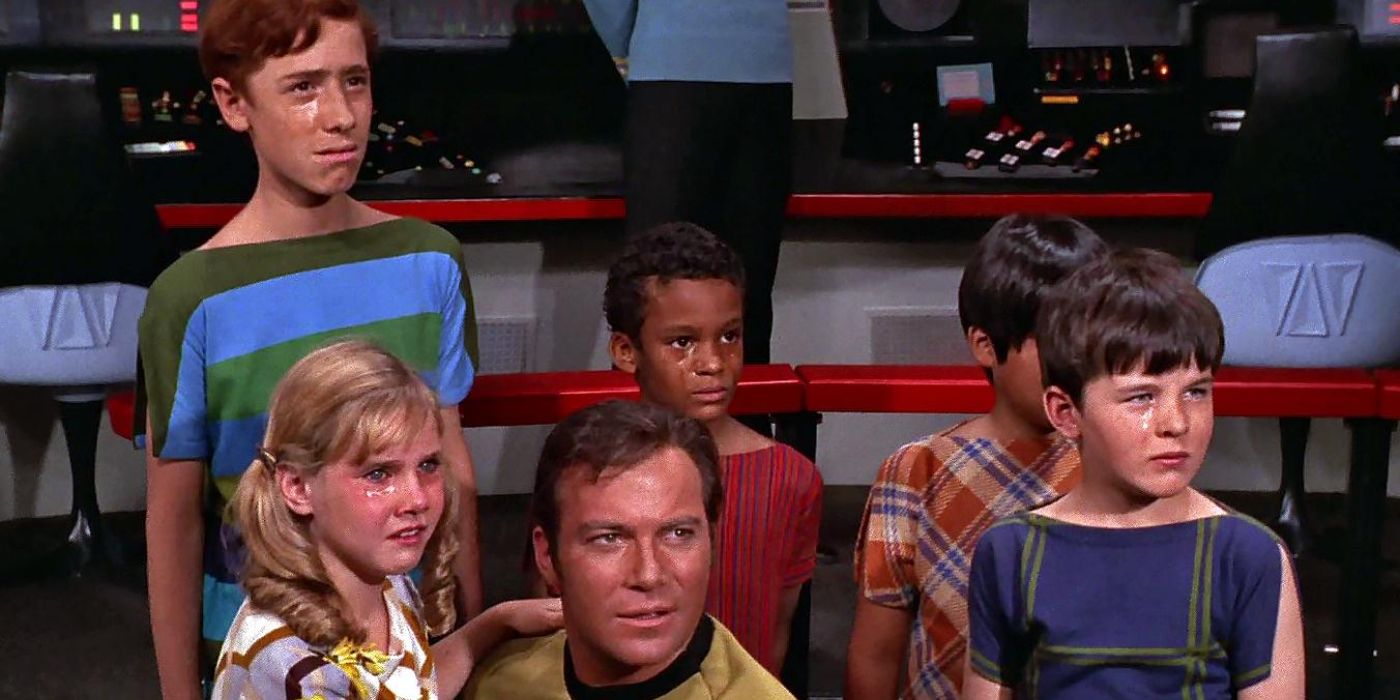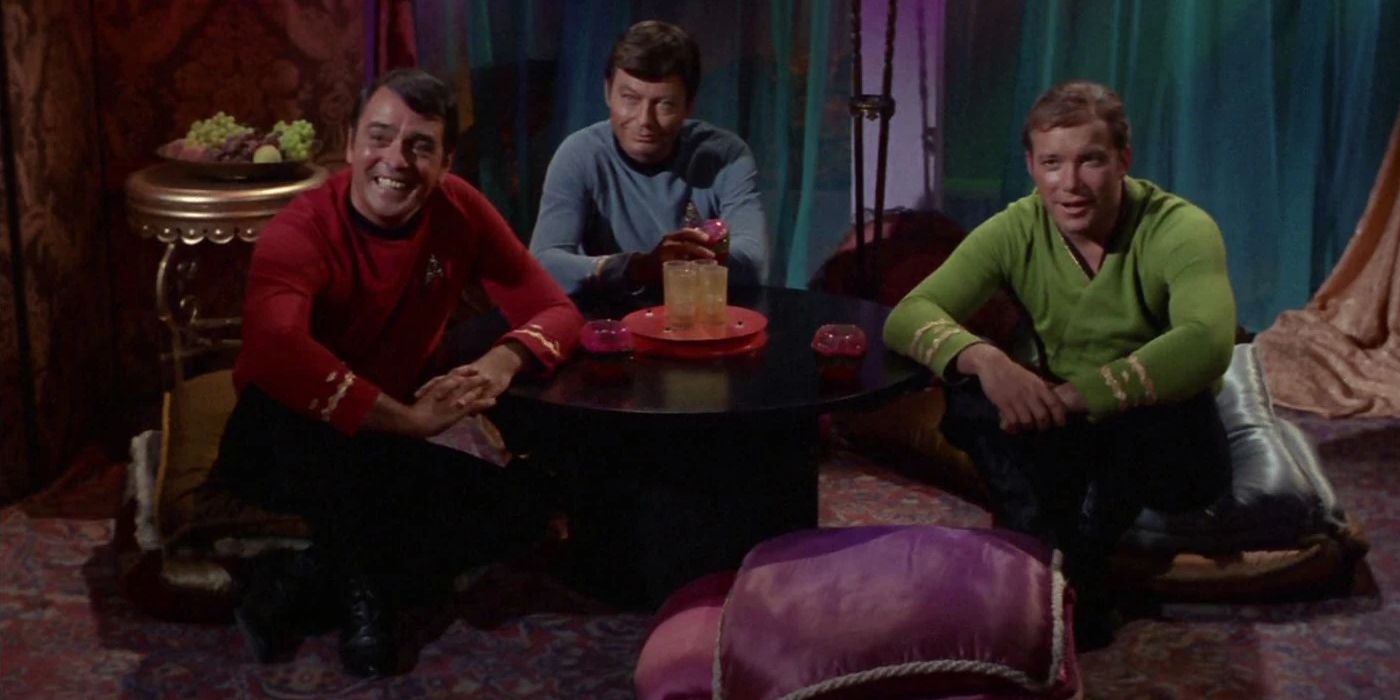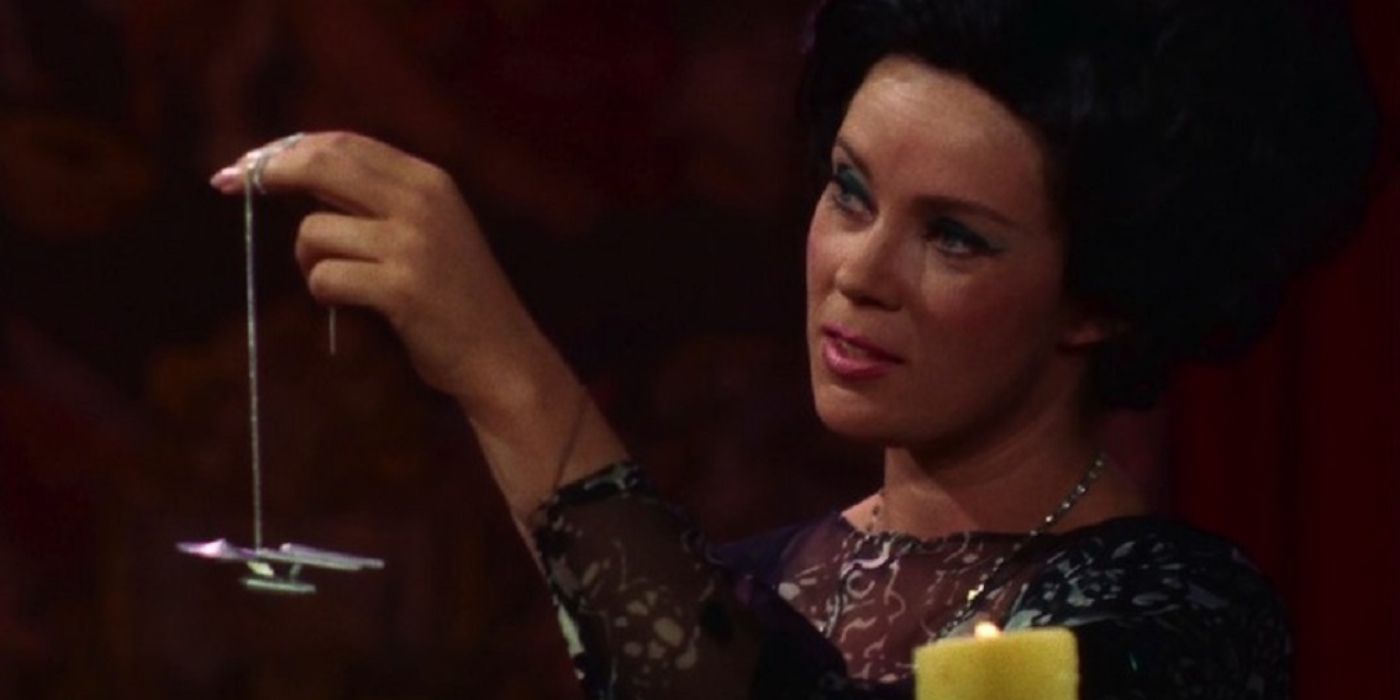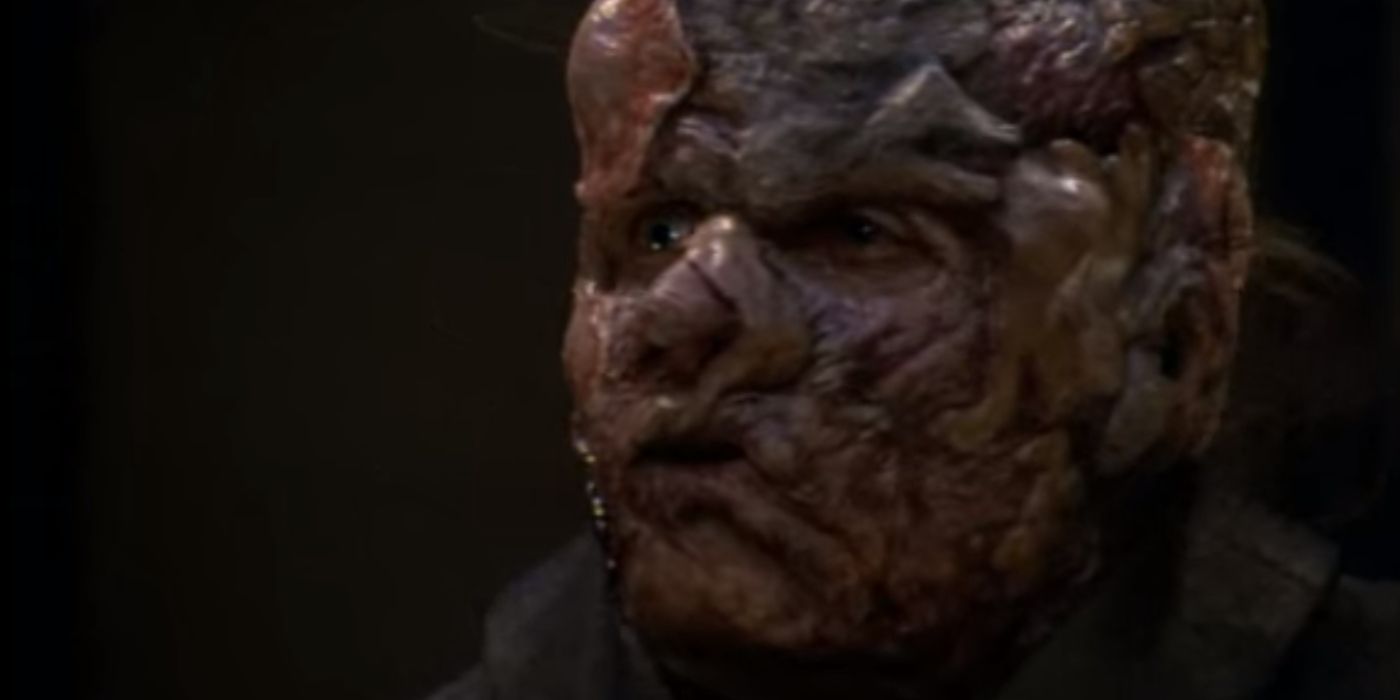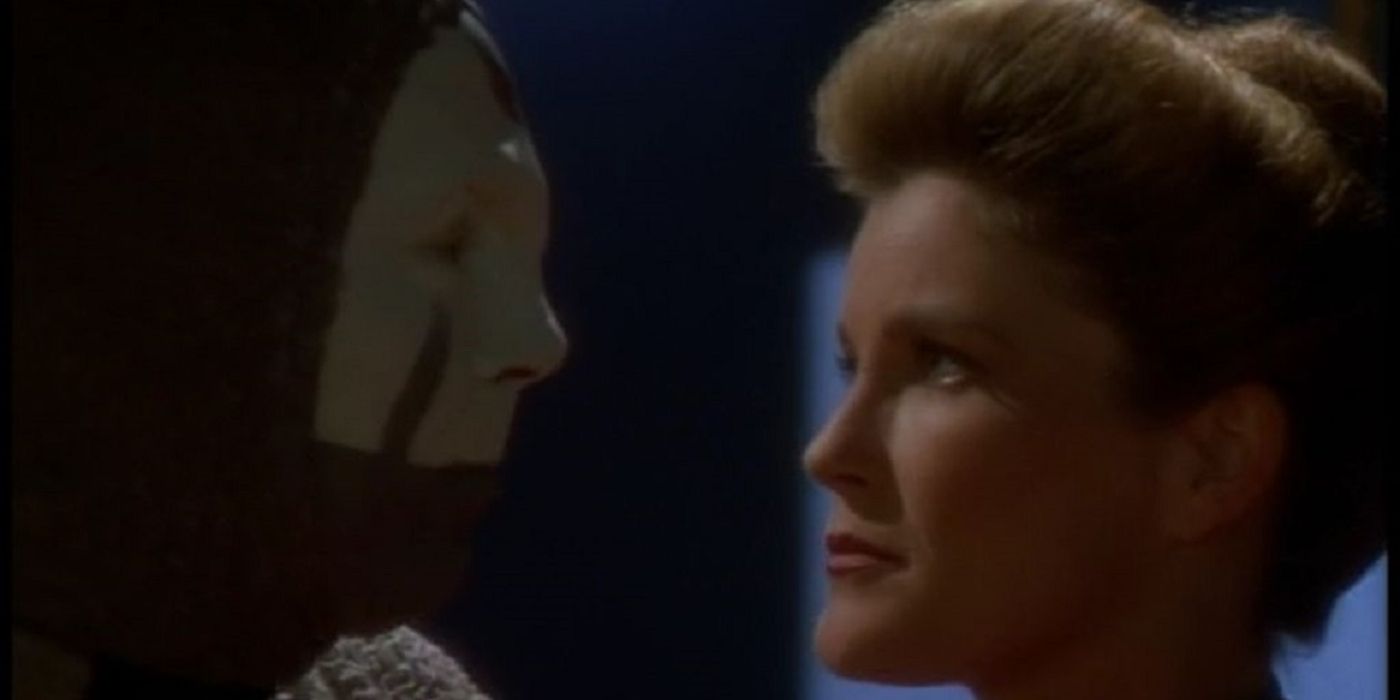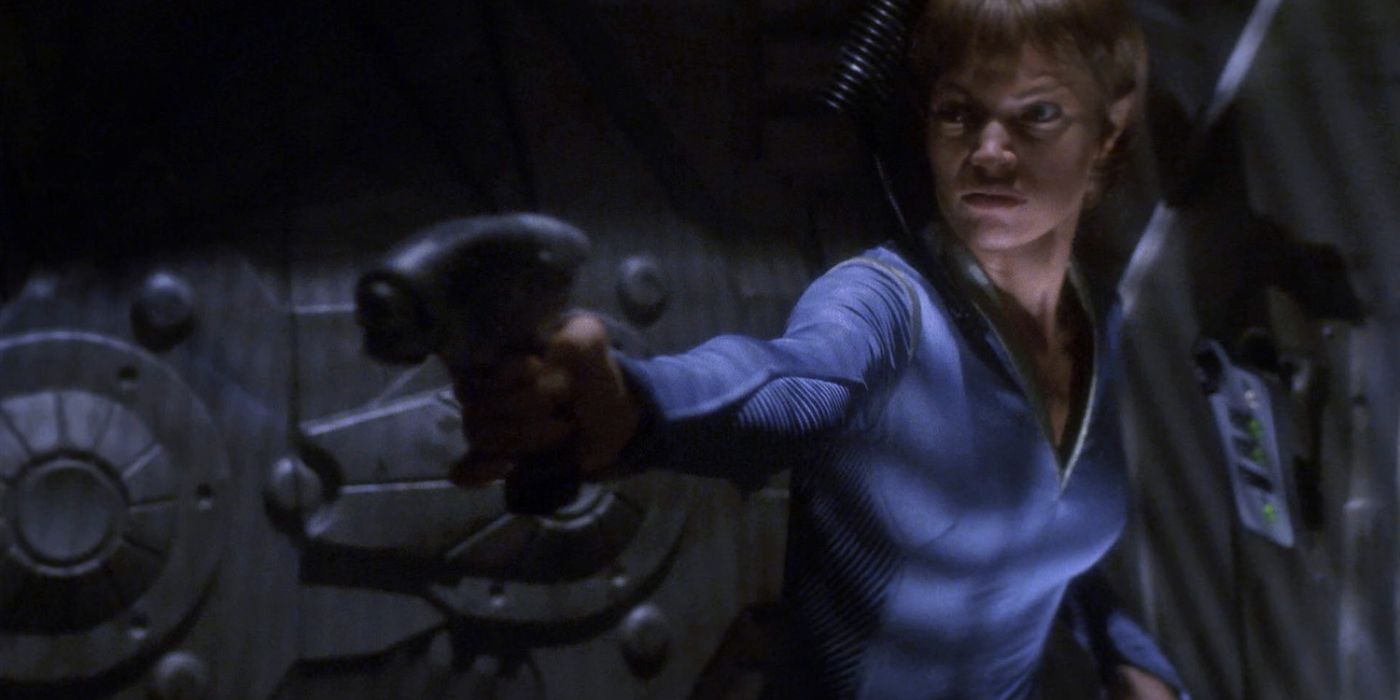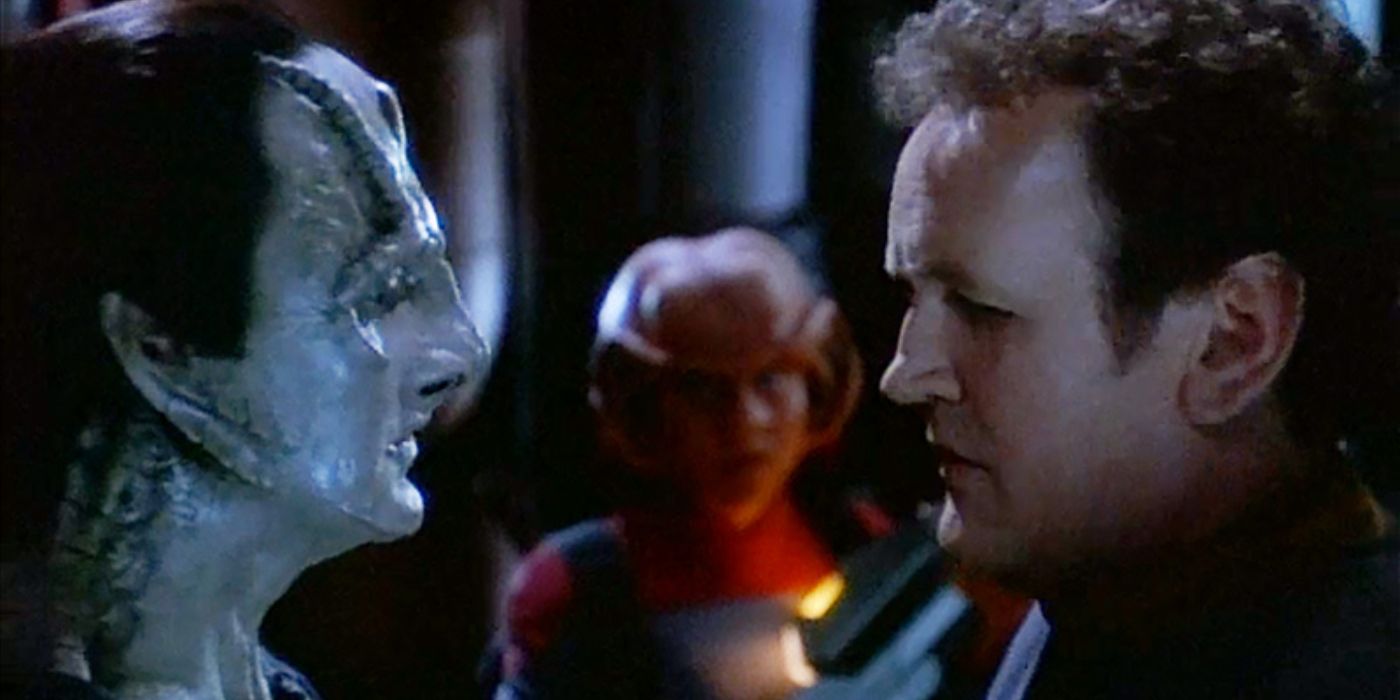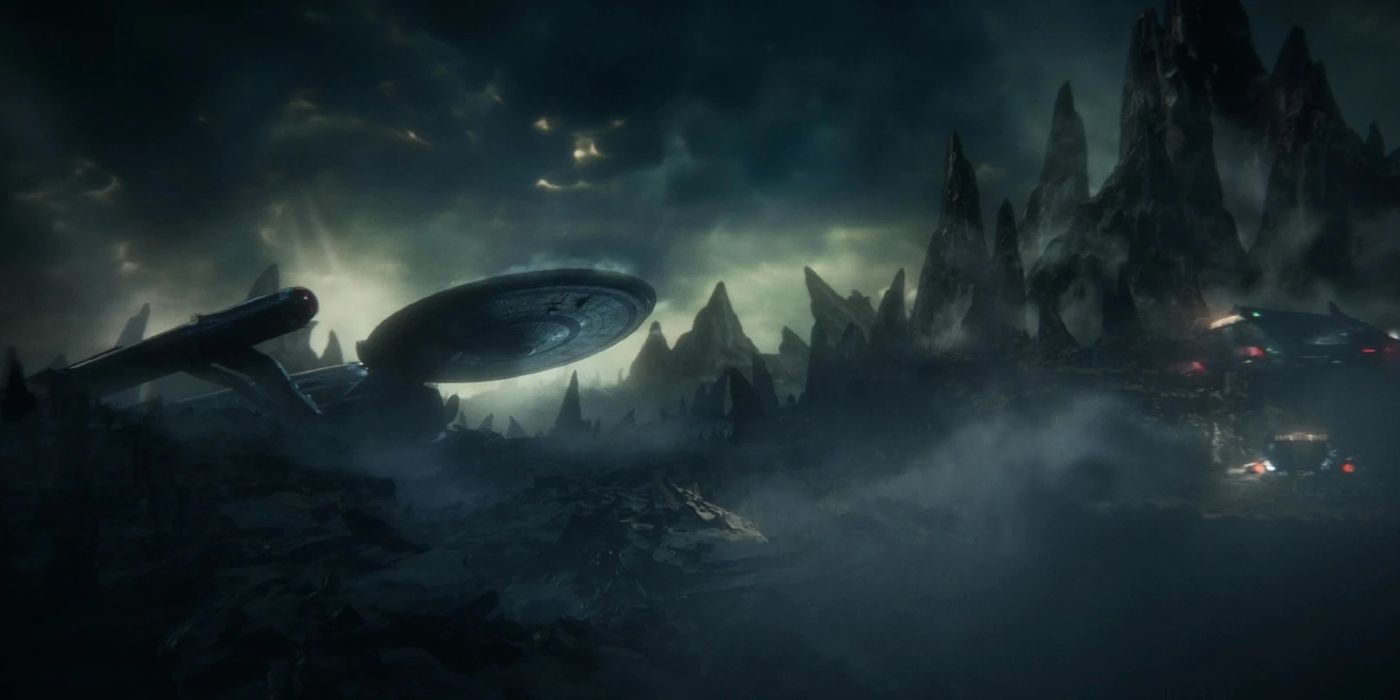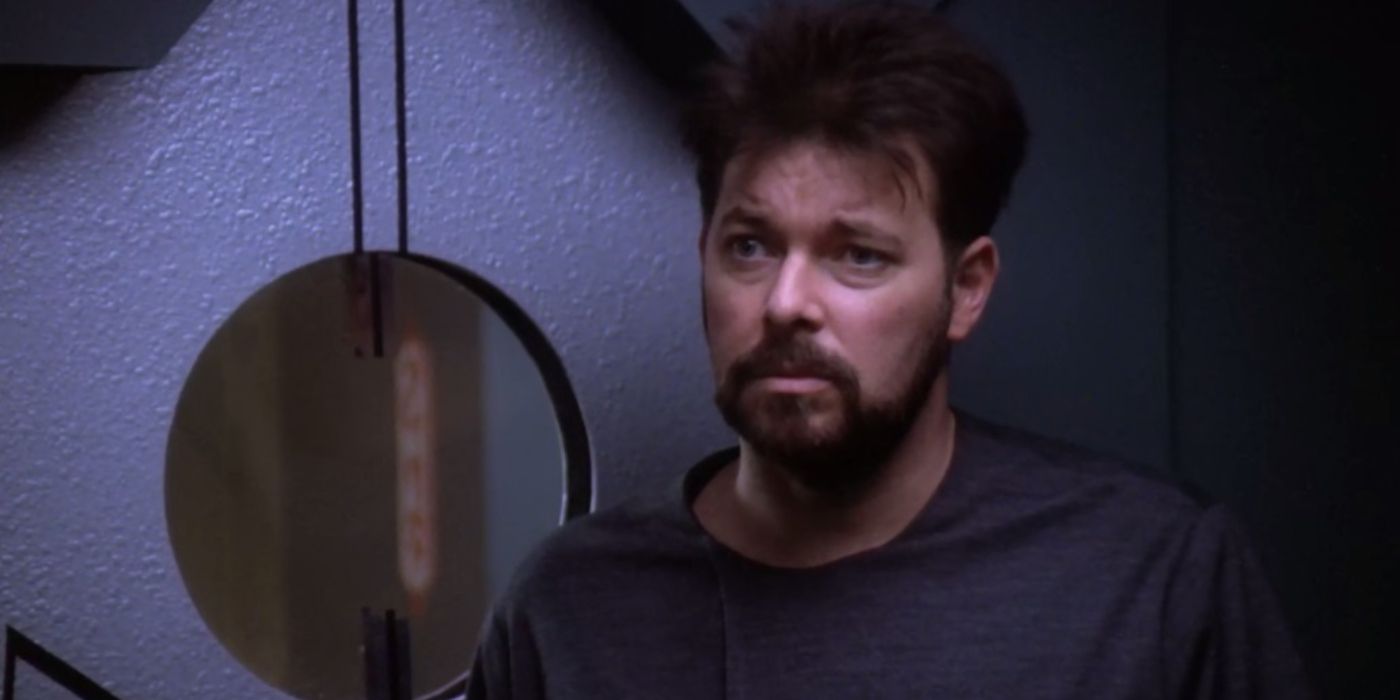For decades, the Star Trek franchise has entertained audiences with its optimistic vision of the future. Since the original series aired in the 1960s, the franchise has expanded to include dozens of additional TV shows, movies and more. The series was created by Gene Roddenberry and has gone on to become an icon of pop culture thanks to its longevity.
Although Star Trek was—and remains—a sci-fi story, the franchise has often drawn from the horror genre to tell stories, from the original series to modern shows. While some of the franchise’s horror episodes are remembered as some of its silliest, others are hailed as classics. When done well, the horror of Star Trek could be disturbing and unsettling, and just as effective as any horror movie.
10 “And the Children Shall Lead”
‘Star Trek: The Original Series’, Season 3, Episode 4
The Enterprise came upon a Federation colony on Triacus where the adults died of apparent suicides and the children were playing unbothered in “And the Children Shall Lead.” The children were then taken aboard the ship, where they were examined and determined to have amnesia, and soon began to exert control over the crew. The children were being controlled by an entity called Gorgan (Melvin Belli), which was only visible when they summoned it.
Although not one of Star Trek’s best episodes, “And the Children Shall Lead” was fairly unsettling. Whenever kids were featured in the original series, they were typically portrayed as antagonists, and this episode was no exception. Creepy kids are one of horror’s greatest tropes, and it made full use of that. One of the best films to compare it to would be The Children of the Corn, but the episode predates the short story by nearly a decade and the film by nearly two.
9 “Wolf in the Fold”
‘Star Trek: The Original Series’, Season 2, Episode 14
In the original series episode “Wolf in the Fold,” Scotty (James Doohan) was on medical leave after suffering a head injury in an accident caused by a woman. After watching a belly-dancing performance, one of the dancers was stabbed to death, and Scotty was found nearby holding a bloody knife, and two more murders followed. The episode was written by horror writer Robert Bloch, famous for writing the novel Psycho, on which the iconic Hitchcock film was based.
The premise of “Wolf in the Fold” was kind of ridiculous, especially decades later. But the episode made use of a number of horror tropes, notably the interesting pairing of murder mysteries and demonic possession, the murderer was revealed to be Red Jack (John Fiedler), a demon who possessed Scotty and the original Jack the Ripper. The episode was also a retelling of sorts of the story of serial killer Jack the Ripper.
8 “Catspaw”
‘Star Trek: The Original Series’, Season 2, Episode 7
In “Catspaw,” after Sulu (George Takei) and Scotty went missing and a third crew member died suddenly, Kirk (William Shatner) organizes a landing party of himself, Spock (Leonard Nimoy) and Dr. McCoy (DeForest Kelley). They first encountered three witches who warned them to turn around, then found a castle inhabited by two aliens with what seemed to be magic powers. The episode aired days before Halloween 1967, and like “Wolf in the Fold,” the episode was written by Bloch.
“Catspaw” wasn’t one of the original series’ best episodes. It was a little silly at times, a problem for an episode inspired by a classic horror movie. The ghostly wailing in the episode toes the line between hokey and creepy. The episode borrowed heavily from the classic film The House on Haunted Hill. The things Kirk and crew encounter in the mansion are very similar to those in the film.
7 “Phage”
‘Star Trek: Voyager’, Season 1, Episode 4
The crew came across a planet populated by Vidiians, a race who stole organs to fight a deadly degenerative illness in “Phage.” After they stole Neelix’s (Ethan Phillips) lungs, the rest of the crew raced against time to retrieve the organs, although they were able to keep him alive, he was confined to sickbay and forced to be immobile, and his physiology made it too difficult to create replica lungs or give him a transplant.
“Phage” was a great episode for Janeway’s (Kate Mulgrew) character, as it forced her into the ethical dilemma of choosing between saving Neelix or an entire species. The plot shared some similarities with the classic horror film The Hills Have Eyes, and the idea of having one’s organs stolen suddenly is certainly terrifying—and the gruesome appearance of the Vidiians made the episode even more disturbing. The episode was inspired by the real-life events of the bubonic plague.
WATCH ON APPLE TV+
6 “Darkling”
‘Star Trek: Voyager’, Season 3, Episode 18
In “Darkling,” the Doctor (Robert Picardo) developed a “personality improvement project,” in which he took on impressive traits from the holocharacters of historical figures in his Starfleet database, but a malfunction with the program meant he also got some negative traits, as well, in a second persona with messy hair and bad posture. His evil persona became fixated on Kes (Jennifer Lien) and injured the man she was interested in romantically pursuing by pushing him off a cliff.
“Darkling” pulled from the classic novella The Strange Case of Dr. Jekyll and Mr. Hyde by Robert Louis Stevenson, which has since been adapted into countless movies and TV shows. The Doctor’s dual personalities were taken right from the story’s plot, although the manner in which they came about was different. And like the original, the episode explored the darker side of humanity, especially interesting for a character like the Doctor.
5 “The Thaw”
‘Star Trek: Voyager’, Season 2, Episode 23
In “The Thaw,” in the aftermath of a natural disaster, Harry Kim (Garrett Wang) and B’Elanna Torres (Roxann Dawson) found five stasis chambers connected to a life-support system. Two of the occupants had suffered heart attacks and died, while the other three were waiting to be reanimated, their minds still active in a sort of virtual environment. There, they were under control by a clown (Michael McKean) and his circus troupe, who used their worst fears against them.
Of all Star Trek shows, Voyager delved into horror most often, including in “The Thaw,” a strange, surreal episode which tapped into the creepiness of clowns and the power of human fear, clearly inspired by Stephen King’s classic It, which had accomplished this to great effect thanks to Tim Curry’s role as the horrifying Pennywise. McKean’s role in the episode was among his most memorable. The episode also had elements similar to The Matrix.
4 “Impulse”
‘Star Trek: Enterprise’, Season 3, Episode 5
In “Impulse,” the NX-01 answered a distress call from a Vulcan ship drifting in an asteroid field, and while the ship couldn’t safely navigate the field, a shuttle could. When they arrived on the Vulcan ship, they find the crew of normally emotionless Vulcans had transformed into aggressive, violent monsters. Ultimately, the cause was found to be trellium, a substance in the asteroid field which affected the brain, and it began to affect T’Pol (Jolene Blalock), too.
“Impulse” made it clear something was wrong immediately, opening with the normally calm T’Pol screaming as she’s strapped down in sickbay. The episode was a clear reference to zombie movies, especially considering the genre began a resurgence right around the time it aired, but the impact of trellium on the Vulcans was more in line with George A. Romero’s film The Crazies, in which residents of a small town turned homicidal due to exposure to a toxic chemical.
3 “Empok Nor”
‘Star Trek: Deep Space Nine’, Season 5, Episode 24
In “Empok Nor,” Garak (Andrew Robinson) joins Chief O’Brien (Colm Meaney) and a team of engineers to salvage equipment on the abandoned Cardassian station Empok Nor, identical to Deep Space 9. The entire station was booby-trapped, and despite believing the station was abandoned, they quickly discovered two soldiers remained, and a drug designed to increase xenophobia had made them more violent. After being exposed to the drug, Garak became violent, as well, and was also responsible for some deaths.
“Empok Nor” shared some similarities with The Thing, particularly in its setting and atmosphere, and it only got more tense as it went on, especially with its use of jump scares. The episode also had elements of slasher films, as the crew was picked off one-by-one by the remaining Cardassians. Some consider it to be the most unsettling of Star Trek’s horror episodes, thanks in part to showcasing Garak’s dark side.
2 “All Those Who Wander”
‘Star Trek: Strange New Worlds’, Season 1, Episode 9
After the Peregrine activated its distress beacon during an emergency landing on L-class planet Valeo Beta V, it lost contact altogether and Starfleet gave the Enterprise the priority mission of finding it four days later in “All Those Who Wander.” When they arrived, they found the crew had been killed by the Gorn and some of their bodies were being used as incubators. After becoming infected with Gorn eggs, Hemmer (Bruce Horak) sacrifices himself.
“All Those Who Wander” made the Gorn more terrifying than they ever had been in the original series. The episode drew from both Alien and Predator—it’s impossible to see chest-bursting aliens and not think of Alien, and the scenes from the Gorn’s point of view were reminiscent of Predator. On top of the horror, the episode also had the surprising death of Hemmer. The Voyager episode “Macrocosm” was also clearly inspired by Alien.
WATCH ON PARAMOUNT+
1 “Frame of Mind”
‘Star Trek: The Next Generation’, Season 6, Episode 21
Riker began to question his reality in “Frame of Mind” when it kept shifting between the Enterprise, where he was rehearsing for a play, and an alien hospital, which looked exactly like the set of the play and mirrored its plot. In reality, he had been captured by aliens who were searching his mind for information about the Federation, and the majority of the episode took place in his mind.
“Frame of Mind” was a brilliant piece of psychological horror, with an amazing performance from Jonathan Frakes, which blurred the line between dreams and reality. Writer Brannon Braga has said he was inspired by the film Repulsion, which also centered on a character questioning reality. The episode also used elements of the play Every Good Boy Deserves Favor, and similar stories have been explored in the years since in movies like Gothika.

